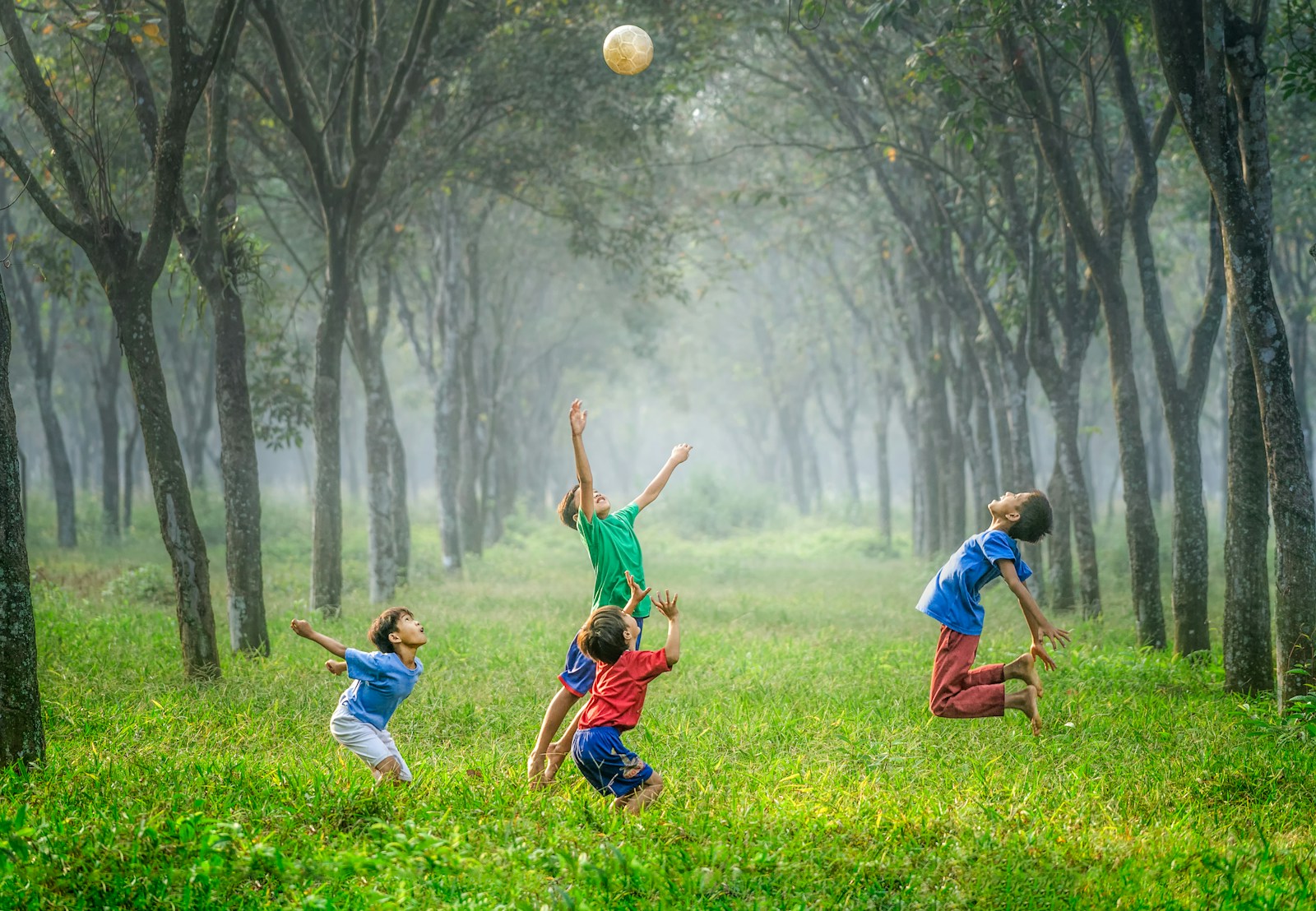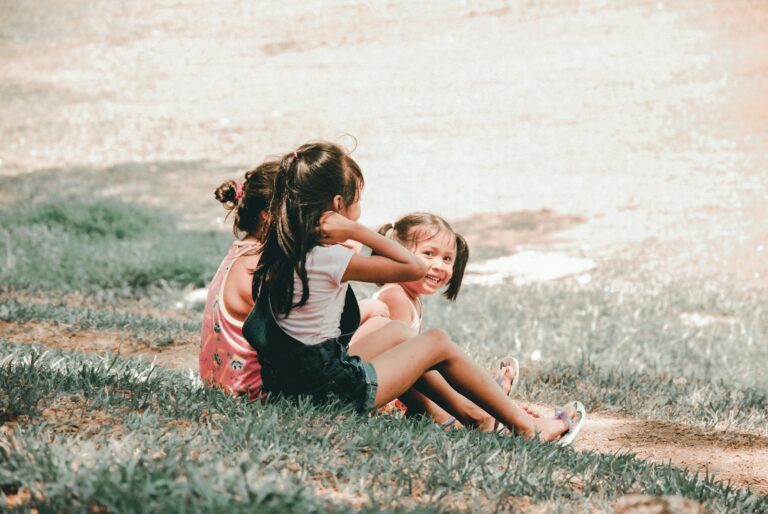Growing Strong: The Physical Health Benefits of Nature for Kids
Overall, children are spending less time outdoors and more time indoors and on screens. As a parent, you probably have a sense that your kids might not be outside as much as you would like. Or maybe, it’s a battle every time to turn off the video games or get them off their phones.
We intuitively know that being outside and in nature is good for kids. Many of us, parents, may even recognize that we spent more time outdoors when we were growing up than our kids nowadays.
Now, there is more and more scientific research on what those actual benefits are. And, there is more research on the impact of screens on child health and development. Technology can have its place and can be beneficial to learning but too much of it can displace valuable time that can be spent on outdoor play and nature contact.
The American Academy of Pediatrics supports and encourages outdoor play. There is more evidence that outdoor play with natural elements also results in numerous mental and physical health benefits. Not all outdoor spaces are the same. A blacktop or parking lot is different from an outdoor park. A 2021 review paper looking at hundreds of studies on nature and child health shows that there is the highest beneficial health effect of nature on physical activity but also on cognitive, behavioral, and mental health impacts.
Regardless of how old your kids are, there are so many benefits that nature has. It may even help with your own personal health. As a pediatrician I definitely see this. When kids are outside playing they are healthier and happier overall.
How does nature contribute to the physical health of infants and toddlers?
For babies
Infants and young children should be “in and with nature” When thinking about kids outdoors, sometimes babies get forgotten. But just because they are not mobile yet or are just starting to roll around doesn’t mean that they can’t benefit from being outside.
Going on a walk outside with my newborn in a stroller or baby carrier not only helped with nap time on occasion but was also hugely helpful for my own postpartum mental health. Infants spend a lot of their time sleeping so why not take that sleeping time outside as well. I would take advantage of their tendency to nap to not only get things done that I wanted throughout my day but also to get my outside time.
Infants are just starting to learn about their environment and their body. With supervision, simplifying putting them on a mat on the grass can help encourage their natural curiosity. They will use their “eyes, hands, feet, mouths, and entire bodies” to experience their environment. As long as infants are dressed appropriately and shaded appropriately, they can also enjoy the benefits of outdoor time.
For toddlers
If you have toddlers or have been through the toddler stage, you know how much energy they have. Getting them outside is a great way for them to stay active and burn off that energy. Going to a nearby playground is a free and easy way to get them running around. It also helps with their gross motor skills, social and communication skills, problem solving skills, fine motor skills, among many others.
In the playground, kids are learning to climb, run, jump, or hold onto things and many other aspects of their own body mechanics. They are watching what other kids are doing, learning to share and wait for their turn. They are also managing their risk tolerance, thinking, do I have what it takes to climb up that ladder or sit on the big kids’ swing? You might also find that outdoor play time for toddlers might even help with their tantrums.
How does nature contribute to the physical health of school aged children?
What about older kids? Most of the research of how nature contributes to physical health is focused on school aged kids and with regards to obesity prevention. At this age, kids may have scheduled physical education time as part of their school day. They may be eligible to sign up for sports at school or through the local parks and recs departments to keep them active.
Kids 6 years and older need 1 hour of moderate to vigorous physical activity on most days of the week. Aside from physical education or organized sports, getting the whole family outdoors together can also help kids develop their personal relationship with nature and instill habits that can be beneficial as they get older.
The outdoors can also be helpful for school aged children to have unstructured independent play. Children are allowed to be bored and boredom promotes creativity. You may find that as kids are bored, they will come up with their own activities. Maybe a game of tag or hide and seek with their peers, climbing trees, or digging holes in the ground. Time spent in nature promotes that creativity and imagination that kids need.
Kids may start to resist outdoor time at this age as they start to exert more independence. Don’t let that stop you. Continue to encourage trying new activities as a family or with their friends.
How does nature contribute to the physical health of teenagers?
The benefits of nature are not just for young or school-age kids, but can also be seen in adolescents. Similar to school aged kids, exposure to nature can promote increased physical activity and fitness for teens. For teenagers who aren’t already outdoor inclined, they may resist even more than when they were younger. Since adolescents are driven by behaviors within their own peer group, this is a great opportunity as parents to encourage nature based activities for your teen and their peers. Host a hike for your teen and their friends or take them to the park for a pickup basketball game.
For teenagers who are already engaged in competitive sports that are outside, while they are getting the benefits of nature, it is also important to remember not to overdo it. Give them the rest they need in between seasons to recuperate, preventing injury, so that it keeps the sport fun.
Being outside is clearly helpful for increased physical activity and exercise. However, there is a rapidly growing body of research on the mental health benefits of time spent in nature in regards to mental health, addressing depression and anxiety symptoms that have skyrocketed since the start of the covid pandemic.
What is the outdoor activity of the week for your family?
Now that you know how being in nature can be beneficial to the health of your children, how can your family increase the time spent outdoors and in nature? Regardless of what challenges there have been in the past,, start small. Pick one day of the week. It may be a few hours during the weekend, an hour on a school or work night, or just 15 minutes if you are having a particularly busy week.
What is your family outdoor activity for the week? Is it going to the park? Is it shopping at the local farmers market? Is it sitting on your balcony patio reading or drawing? Is it playing in the backyard? Whatever it may be, I promise that you and your children will reap the benefits.
Every child and every family is different.
Remember, every child and every family is different. If your child has specific health needs such as asthma or allergies that might flare up when outdoors, it’s best to talk to your child’s doctor to make sure those areas of their health are optimized so that they can also enjoy being outside and benefit from time spent outdoors.



